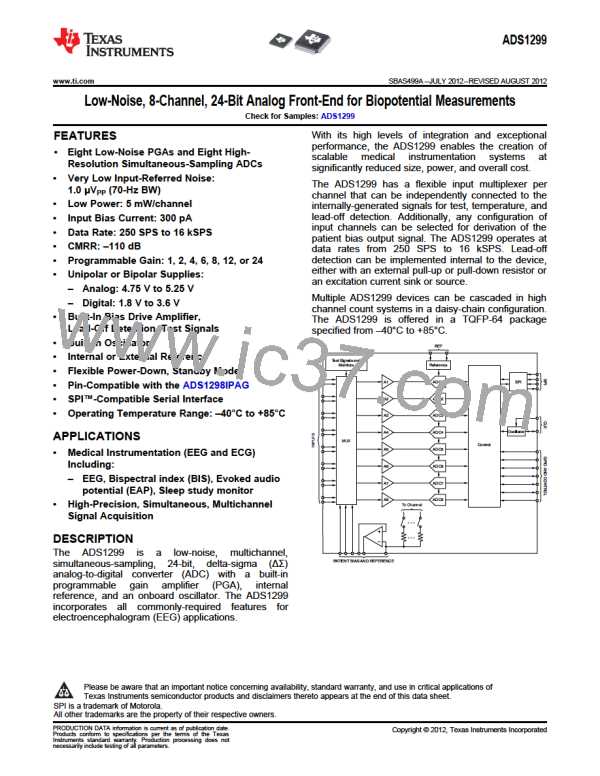ADS1299
SBAS499A –JULY 2012–REVISED AUGUST 2012
www.ti.com
LEAD-OFF DETECTION
Patient electrode impedances are known to decay over time. These electrode connections must be continuously
monitored to verify that a suitable connection is present. The ADS1299 lead-off detection functional block
provides significant flexibility to the user to choose from various lead-off detection strategies. Though called lead-
off detection, this is in fact an electrode-off detection.
The basic principle is to inject an excitation signal and measure the response to determine if the electrode is off.
As shown in the lead-off detection functional block diagram in Figure 48, this circuit provides two different
methods of determining the state of the patient electrode. The methods differ in the frequency content of the
excitation signal. Lead-off can be selectively done on a per channel basis using the LOFF_SENSP and
LOFF_SENSN registers. Also, the internal excitation circuitry can be disabled and just the sensing circuitry can
be enabled.
Skin,
Electrode Contact
Model
Patient
Protection
Resistor
Patient
Z1
47 nF
51 kW
51 kW
VINP
To ADC
VINN
Z2
LOFF_SENSP
LOFF_SENSN
47 nF
FLEAD_OFF[0:1]
Z3
47 nF
6 nA and 24 nA
6 mA and 24 mA
51 kW
AVDD
AVSS
BIAS OUT
Figure 48. Lead-Off Detection
50
Submit Documentation Feedback
Copyright © 2012, Texas Instruments Incorporated
Product Folder Link(s): ADS1299

 TI [ TEXAS INSTRUMENTS ]
TI [ TEXAS INSTRUMENTS ]